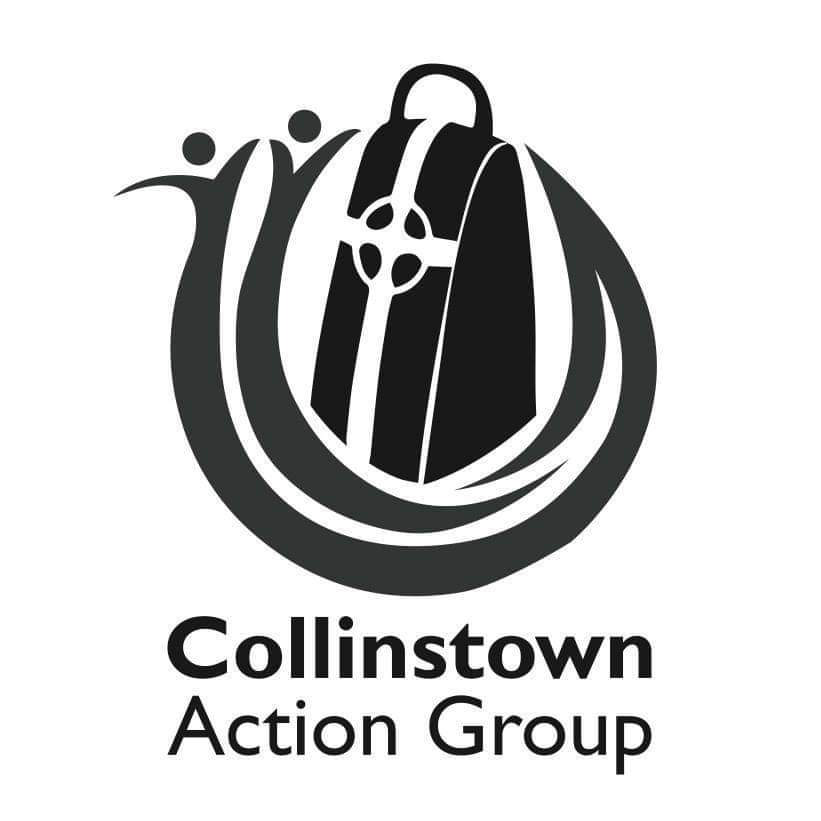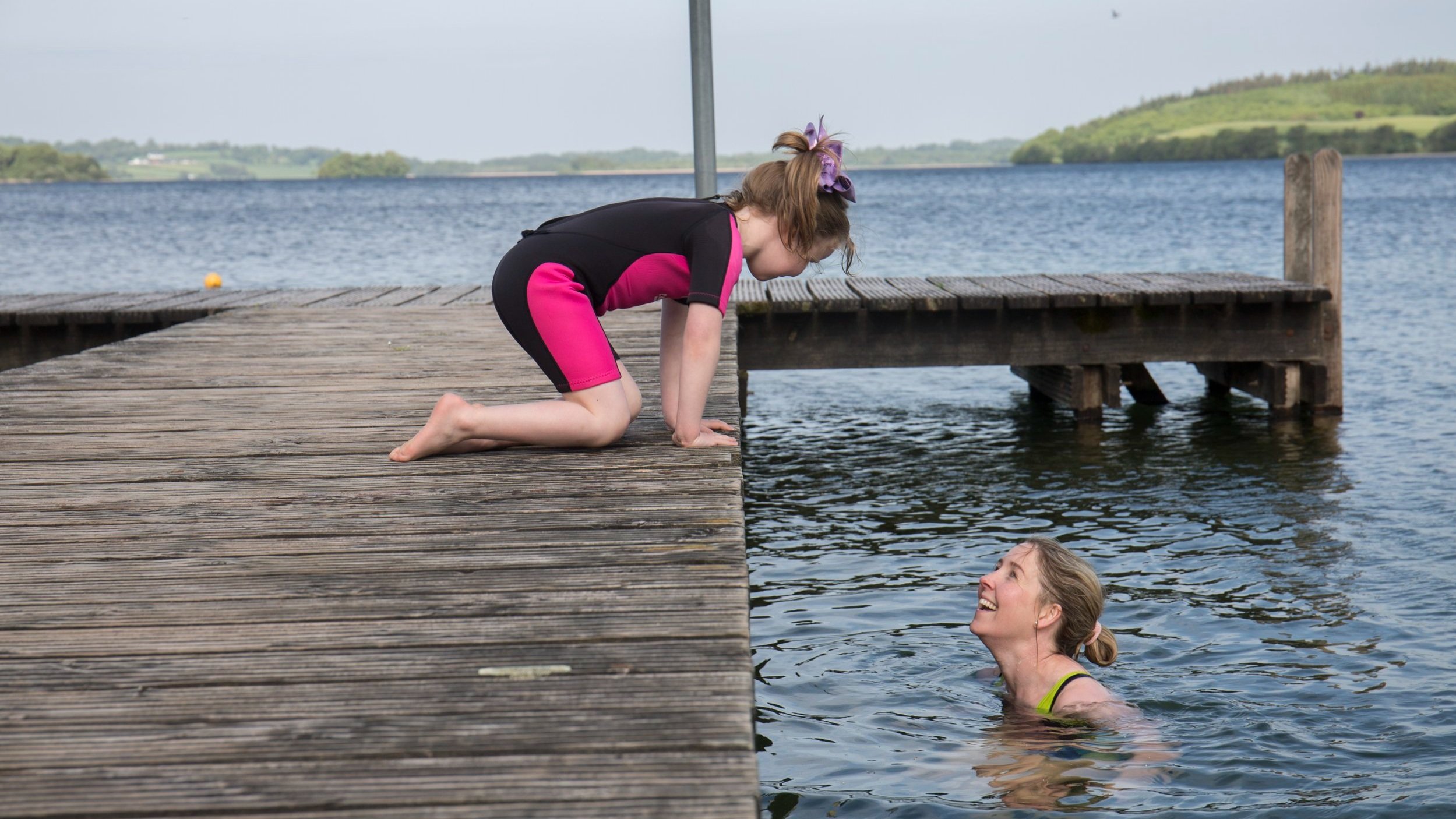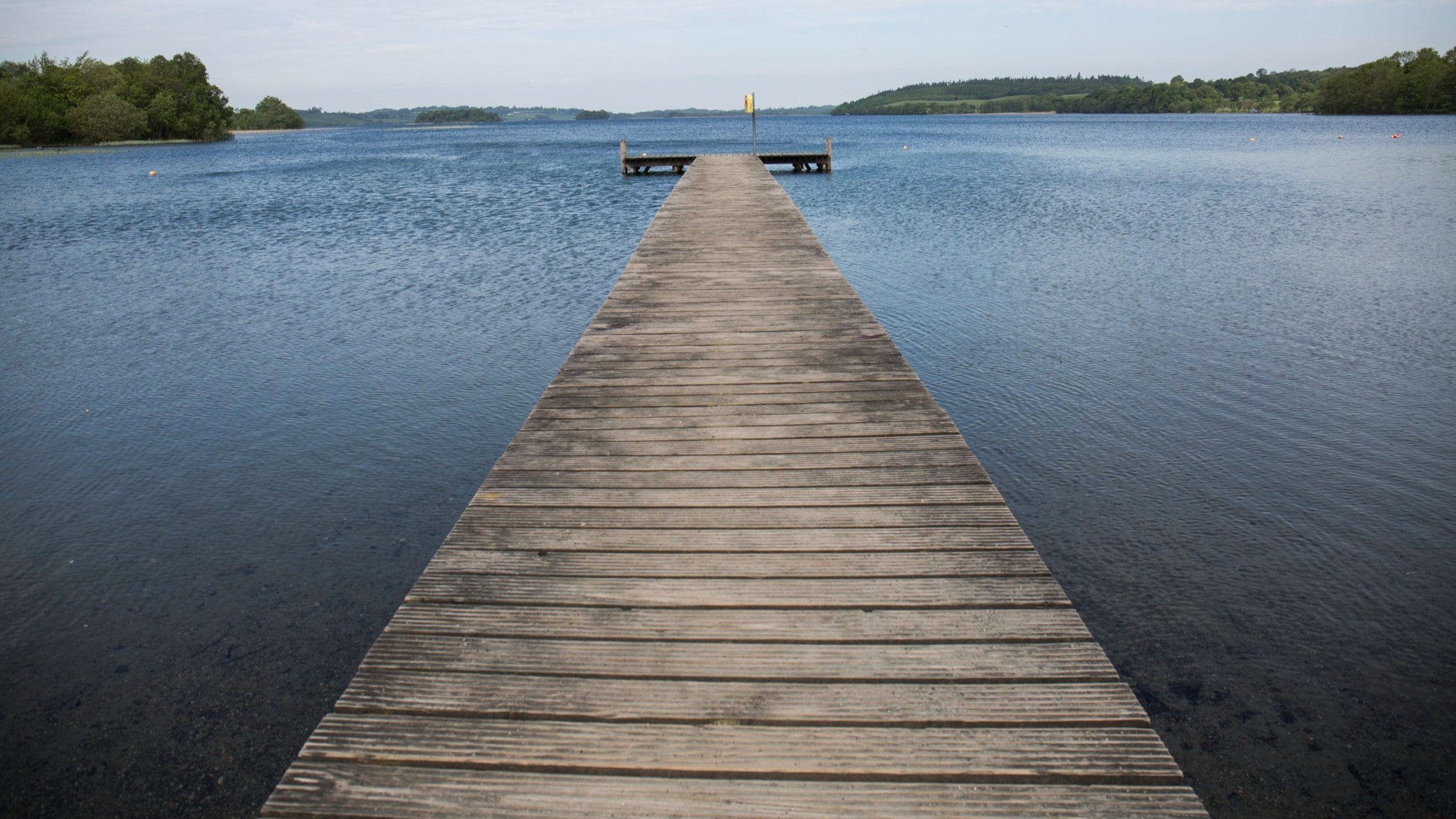The Cut, Lough Lene
Getting There
The Cut at Lough Lene is situated just off the Lake Road in Collinstown. From Collinstown village, travel 1.8km out the Lake Road, towards Oldcastle, and then turn left. You will have reached your wonderful destination. To find directions on google maps click here.
Facilities
There is ample car parking, changing facilities and public toilets at The Cut. Enjoy the views, a reluctant dip or a lovely swim in the beautiful lake. Take the boat out for some fishing or the boards out to join in on the stand up paddle boarding. Please ensure you use the bins provided and leave Lough Lene the way you would like to find it.
About LOUGH LENE
by Lesley Gleeson
Our beautiful Lough Lene boasts not only a rich history but ancient burial sites, old ruins, ringforts, stiles and mass paths. It can also claim to have been home to kings and Vikings!
Lough Lene is an irregular oval shape covering approximately 500 hectares of exceptionally clear freshwater. There are a number of islands, with 3 of note; Nun’s Island (which once housed a convent), Turgesius Island (home of the Viking leader Turgesius), and Castle Island (on which the famous Lough Lene Bell was found). Discoveries on Castle Island also include 2 longboats which were recovered in 1968. These Roman-period boats were constructed for lake fishing and are about 8m long. Made of oak, yew and possible willow, they were paddle propelled.
When Ireland joined the European Union, Lough Lene became the first freshwater lake to obtain a Blue-Flag for its pollution free water. This has been awarded with remarkable regularity to the Lough Lene, mainly due to the surrounding agricultural communities commitment to preserving this wonderful water resource.
Wildlife on the Lake
The lake supports a wide and varied range of plant life, from pondweeds and stoneworts to reeds and willows.
Birdlife on the lake includes, mute swan, teal, pochard, grey heron, mallard, cormorant and water rail. The surrounding lands are home to snipe, lapwing and curlew.
The Jewel
By Tom Doc Sullivan, angler. There is something special about Lough Lene, something very special. Nestled as it is amidst the rolling pastureland and woods in Collinstown, it is a wonderful spectacle to behold. Even in the ‘Lake County’ of Westmeath it stands out amongst the other loughs as one of the most beautiful, its crystal-clear water, spring fed and wooded islands holds a magnetic attraction.
However, it is not beauty alone that draws me and so many other anglers to Lene, it is the matter that it also offers the trout fisherman some of the finest sport in Ireland. This is due entirely to the magnificent work that is done by the Lough Lene Anglers Association in managing the Lough as a fishery. Lene is not blessed with an abundance of nursery streams for the indigenous trout to regenerate the lake naturally. The association has long realised this and has always had to augment the natural population with a stocking policy. A number of years ago they had the foresight to start stocking, along with brown trout, rainbow trout. The proverbial statement ‘duck to water’ springs to mind and the rainbows thrive in the rich feeding that the waters of the lough provide. Within a couple of weeks after they are stocked into the lough, these rainbows become solid bars of silver, sleek and muscular they flourish in their new environment and become a challenging quarry for we anglers.
If I can impress on people how good Lene is I tell them this, I am fortunate enough to live in another beautiful place, at the foot of the Maamturk Mountains, in Joyce Country on the shores of Lough Corrib, itself a wonderful fishery. I will, however, happily get into my car and drive the two and a half hours’ journey to Lene to savour its fishing. The thought of drifting Fagan’s shore with my dry fly out before me. Watching it disappear in under the tiniest little dimple on the surface and as I tighten my line, it all explodes in a myriad of bright silver trout flank betwixt a cascade of splashing water and the rod buckles under the strain of a fighting fit grown on Lough Lene Rainbow. Now that’s a little bit of heaven!
The Story of "The Cut"
By Bill Connell In the mid 50s Doctor JJ Cox visited the cut with his family and constructed a diving board roughly where the present jetty ends. In the 60's Maureen Murray a PE teacher from the Anchor Bar, Castlepollard taught a small group how to swim. In the mid to late 60's a group from Iralco including members of the Pohl and Brandt family manufactured a jetty and with help from a few others erected the first real jetty in deep water.
Molly Cahil (rip), who was heavily involved in Community Games, organised swimming through the Irish Water Safety Association; thereby ensuring Lough Lene as a premier swimming area, with people from many counties using The Cut. In the 50's and 60's the house on the hill had a small shop, the Tailor Smith and his wife, selling ice-creams and treats for the children who never seemed to feel cold or rain. In later years the County Council Purchased a disused quarry, across the road, and built the excellent carpark and dressing rooms.





